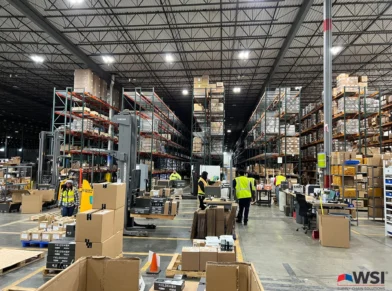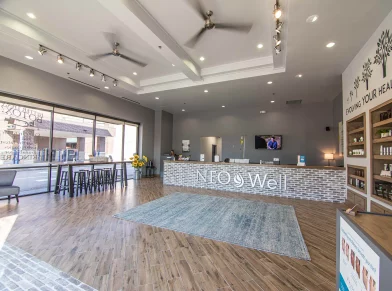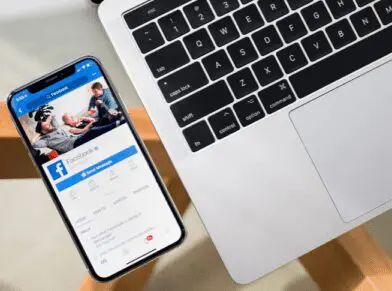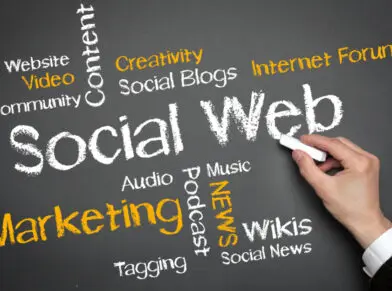IS SOCIAL MEDIA THE KEY TO GOOD CUSTOMER SUPPORT?
A couple of months ago, I had a couple of trees in my yard that needed to be trimmed. I did a quick Google search to find a local arborist and gave him a call. After a quick chat to schedule and discuss some specific instructions, they came to do the work. However, they didn’t follow my instructions or complete the job as we agreed. I called them, but the company didn’t answer. So, I did what more and more people are doing these days: I left a comment on their Facebook page. I have yet to hear back.
Unfortunately, this is still a common problem with social media. Customer service is evolving. The traditional channels: a 1-800 customer service line and a customer support email address are no longer the first choice of today’s tech-savvy consumers. Customers are social, they want to interact with the companies whose goods they purchase.
According to Gartner, by 2014, customers will expect the same level of interaction with businesses through social media as they do through the telephone. Also, according to a recent American Express Global Customer Service Barometer survey, 83% of customers who use social media for customer service abandoned an intended purchase because of poor service or lack of response.
But it’s not just about meeting some customers expectations. Using social media as part of your customer service approach can also save money. By monitoring your company’s mentions on social media sites, you can catch potential problems before customers call in. By catching them early, you save the time and money required to deal with the call. If, for example, each call averages 5 minutes, and you catch 10 potential problems each day, the savings could be hundreds of dollars per day. And all because you met your customers where they’re already gathering online.
Social media isn’t going anywhere. Do you need help building a social media strategy for your business or monitoring your reputation online? We can help. Call us at 972-472-8497 or visit our website for more information: Globerunner.com.
GET YOUR TWITTER FOLLOW BUTTON!
Back in February, we did a blog post about Twitter redesigning its interface with additional features and rich media integration. Now, Twitter has recently rolled out another change that may have a large impact for businesses; the Twitter Follow Button. Users can now click an embedded Twitter button to follow Twitter accounts directly from websites that interest them.
Officially released on May 31st, this new feature allows businesses with a Twitter presence to generate a simple code for the follow button that embeds on their website, allowing users to follow the company’s account on Twitter with a single click. This single-click action is important because it allows visitors to remain on the company’s domain without being redirected in order to access Twitter, preventing them from having to leave the page and alter their train of thought. Users must be logged in with Twitter to be able to one-click follow- if they are not, they will be prompted to log into Twitter through a pop-up window.
With the option for a business to show how many Twitter followers they have next to the follow button, companies can flaunt their massive amount of followers. Or, companies can choose to hide their number of followers if they don’t feel confident with the figures. It’s common for consumers to judge the validity of a business based upon the number of followers, friends, and reviews they have, so some may find this feature beneficial.
Social media marketing strategies are very important, and social media sites are adapting to the changing consumer and the way they interact with businesses. Sites like Twitter allow companies to communicate with consumers in a unique and personal manner, but driving traffic away from a company’s main site to access another communication channel is superfluous and unnecessary. The Twitter follow button presents a simple solution to growing your Twitter community without disrupting the user experience of your home site.
SOCIAL SEARCH
If you’ve done a search on Bing or Google recently, you may have noticed the addition of “social circle” qualities included within the search results. For example, links that have been “liked” by members of your Facebook network may be pushed towards the top of the search results when searching with Bing. Or, if you’re using Google, you may see links that have been shared by members of your Twitter network included within the search results. This new feature of a social search allows a user to view more personally relevant results determined by the user’s social networks, making results unique to each person who has their own network of friends. Traditional search algorithms are used alongside the new social search feature, so search results will still appear normal if not shared or liked by anybody in your social network.
Through research, Bing states in a recent blog post that 90% of consumers look to their family and friends when making a purchase decision, and almost 80% of consumers will postpone a purchase decision until getting approval from a friend. Adding social qualities within the search results creates more of a conversational aspect to the search process, using the collective knowledge of the web as opposed to only facts and inbound links. Your friends, and the global community, can now help you discover information that is more relevant to you.
There was one issue with Bing’s social search that I found misleading when searching for a particular product. After searching for a specific product category, like cameras, it appeared on the search results page that a handful of my friends on Facebook liked some of the camera product pages on certain websites. In reality, that was not the case. My Facebook friends only liked the parent website that the products are listed under, i.e. Overstock.com, and not the actual product page. This may fool some consumers into making a purchase because they perceive they’re friends “liking” the product page when they actually have no interest in the product. Bing claims this will allow you to trust the source from which you are buying your product, but I don’t think users will view it that way.
Now you may be asking yourself, “What about Google?” Google still has a stronghold on the search process with a large following. Although Facebook and Bing have created a partnership to give Bing better access to Facebook’s information for search results, Google can also use your “social circle” to give you personally optimized and relevant results. Google uses Twitter, Flickr, Blogger, and other publicly available sites to show you results that people in your social circle have shared or recommended. It operates in a very similar way to the Bing social search, but without access to Facebook data. Google claims they will soon find a way to access Facebook’s data for similar search purposes, but I wouldn’t expect a partnership to form.
Google is also trying to implement a new social layer, called “+1”, which will allow a user to publicly approve of a link or website. This appears to be Google’s attempt to compete with Bing’s inclusion of Facebook data in their search results. Something tells me that it’ll be difficult for +1 to catch on with users, as there is already a wide assortment of social features and buttons on the web, and adding another might create more clutter for the user. Although, Google has surprised me in the past, so I can’t ever completely count them out.
I recently attended a seminar for the Dallas Ft. Worth Search Engine Marketing Association where they discussed these new social search features in detail. Their was much talk about creating valuable content that will entice viewers to like, share, or repost within their social circles. After all, content is the reason your brand gets shared. Finding the social “influencers” of the net and using them to share your content can help generate traffic and exposure. Conversations are happening right now about your brand, and real-time marketing should be implemented to be a part of that conversation. There is social relevancy in what is being said about your brand, and having a consistent presence in conversations will work in your favor.
How do these new social search feature effect your business? Are you going to have to change your current SEO tactics? Do you need a Facebook page? Will this benefit local search? Contact us today to learn how our team at Globe Runner can help your business adapt and benefit from these changes.
WELL PLAYED: LILLY PULITZER’S FACEBOOK FAN STAMPEDE
Popular amongst women of all ages, Lilly Pulitzer has been a long-standing symbol of fun, feminine fashion including their hallmark product- the brightly colored shift. One particular consumer segment received a big gift from the Lilly Pulitzer brand when the company developed a line of bags and accessories in custom-designed sorority prints. Originally the prints were for four national sororities- Delta Zeta, Kappa Delta, Kappa Kappa Gamma, and Delta Delta Delta.
There are significantly more sororities than just those four. The National Panhellenic Conference recognizes 26 international sororities, not to mention the historically African-American, Latina, special interest and local sororities found on college campuses nationwide.
About a month ago, the designers at Lilly Pulitzer made an announcement on their Facebook page that they wanted to add groups to their sorority prints, but to decide which groups to represent, they were going to put it to a vote on their Facebook page.
Lilly’s page, which had about 140,000 fans already (being a national brand does have its perks), gained 50,000 followers within a week of the anouncement as girls got their groups together to “Like” the Facebook page and vote for their group. After a week, the groups got narrowed down to nine sororities for the last round of voting.
1,023 likes and 713 comments, all from die-hard brand supporters. Look at that level of engagement. Then check out when they announced the winners:
ALMOST FIVE THOUSAND LIKES. The Lilly Pulitzer Facebook Page now has close to 260,000 facebook fans- almost double what they started out with. And the next time they want to add more
The best part of what Lilly Pulitzer did with this online contest is the human aspect of it- the design team at Lilly would do off the cuff video responses to their fans as the voted rolled in and they reached different stages of the contest.
This accomplished a few things simultaneously:
- It humanized their brand and let people see what goes on behind the scenes at a company they love
- It encouraged more participation among their users
- It crowdsourced opinions on a product they knew they were going to make anyway, quickly identifying needs and and getting a consensus without having to spend time debating amongst themselves- a process which would probably lead to a similar outcome without getting them any new Facebook fans in the process.
By holding this contest on their facebook page, they saved time and money on promotions and R&D while building loyalty within their consumer base.
Well played, Lilly Pulitzer. Well played.
MAY 2011 FACEBOOK PLATFORM UPDATES
If you’re trying to develop a Facebook application. Recently, Facebook has provided a new feature for developers: The ability to create test users.
Having the ability to create test users for your Facebook application will allow you to test your custom Facebook applications.
This is very useful when you’re trying to produce FBL queries or graph api queries about particular users.
The new features allow developers to:
- re-authenticate Facebook users to confirm user identity
- Generate test Facebook users email and passwords via the Facebook Graph API
Facebook Send Button
Along with another recent update the new updates provide developers with the combined like or send button. This feature allows Facebook Users with the ability to send and share links or url’s privately as a Facebook Message.
TWITTER REDESIGNS ITS INTERFACE
If you are like most Twitter users, you usually access Twitter through a third-party application. Some use browser-based services like Hootsuite, while many prefer desktop applications like Tweetdeck. Still, the majority of tweets come from mobile devices using text messages and mobile apps.
The fact is, that less than half of all tweets are sent from Twitter.com and its web interface. Looking to build up lost ground to many of these applications, Twitter has redesigned its own interface to look more like the third-party apps it competes with.
Some of the newest changes include:
- Reply-all functionality
- Auto-complete when entering someone’s Twitter name for replying and mentions
- Endless Scrolling capability
- “OnMouseOver” – Scrolling over a link to get a preview
Many would agree that the most drastic change in Twitter’s interface is the embedding of content; the days of clicking on a link and having it open in a new web browser are now gone. Now, you can click on a link in a tweet on the left side of the page, and the content – pictures, Youtube video, etc. – open on the right side. With this change, Twitter hopes to keep people on its website longer, and make the experience more intuitive.
However, any other time a social network makes changes to its features and interface, flaws and growing pains are inevitable. For example, On September 21, a security flaw in the “OnMouseOver” feature caused many accounts to be hacked – just by mousing over links in tweets (the issue has since been resolved).
Also, though the design is laudable, things are still a little difficult to find, and some new features don’t work as expected; for example, the fact that you can now reply to all the people in a tweet, but not just to the person who sent the tweet is a confusing misfire.
Most complaints related to the roll-out of the new Twitter. According to Twitter’s then-CEO, Evan Williams, the new Twitter was rolled out completely at random to users all over the world. Many of those who want it have no way of experiencing it yet until Twitter grants them access to the new interface.
So how are people reacting to New Twitter? Initially, the response was overwhelmingly positive, but as users have gotten to interact with the redesign and flaws in the interaction have come to the surface, the redesign has gotten mixed reviews.
Do you have the new twitter? What do you think? Is the redesign enough to make you switch from your third-party app? We want to know!
GOOGLE MAKES SEARCH MORE SOCIAL
As more and more players enter into the search engine market, the only way to win market share is to innovate; come out with new features, or make your search engine faster. Recently Google did this, when it unveiled Google Instant, showing results as you search, shaving on average 2-3 seconds off of a search.
Though social media is being universally adopted and growing immensely in popularity, it has been relatively untouched by the search world until now. Bing recently announced a deal with Facebook to integrate Facebook’s data into their search algorithm.
Google is similarly introducing more social into its results. Now when you search a specific topic on Google, a link under each result shows how many people have shared the same link. In addition, Google will also show how many updates on Twitter, Myspace, and Facebook have the link in them.
The new feature between Bing and Google may seem similar – however, Bing only shows social results from your friends, whereas Google shows results from the whole web.
So what does this mean for SEO? It means there will be some changes, but nothing earth-shattering. The biggest change is that it gives more relevance to social media, and also makes the search experience more intuitive. It also means that embracing social media, especially “like” pages, all the more important. However, this will impact the SEO industry, but not dramatically. The SEO industry hasn’t been about simply reacting; for one to stay relevant in this industry, you learn to adapt to changes. In addition to adapting, SEO is about making search better and more intuitive. So even with Google’s new search integration, the search will go on.
FACEBOOK AND BING INTEGRATION BRINGS SOCIAL INTO SEARCH
Another big announcement from Facebook: Facebook and Bing are teaming up to make search more intuitive and help your decision-making by integrating Facebook data into Bing search results.
Searching on Bing won’t send any social interactions back to Facebook, however Zuckerberg says if a friend has shared or liked content that relates to that search, Bing will offer that as a search result. For example, if you’re searching for a restaurant in town, it’ll have results saying your friend liked that restaurant. Friends who like the movie you’re searching for will appear above the showtimes. There will also be “People Search”, where Bing will return Facebook profiles as search results. Type in a name- if you were searching for Eric, you’d type in his name and it would return his facebook profile if he was in your social network. This is especially helpful if you’re looking for someone with a common name- Bing will use this data to return the person most relevant to you using your social data. No more searching through endless John Smiths.
This means that, for Bing, having fans who like your brand on Facebook will become even more important- people will see your business at the top of their search results because their friends like your business. These social search results will help drive decision making based on confidence in the opinions of peers, so this is a new consideration for social media strategies. If you haven’t made your Facebook page a priority, now is the time.
“THE SOCIAL NETWORK” IS #1
How many of you have your Facebook open in the next tab on your browser? Do you even remember when you joined- did you think it would grow into the huge internet phenomenon it’s become today? How did Facebook even begin? The origins of the popular website are the subject of the highly-anticipated movie, “The Social Network,” which made its box office debut at #1 this weekend.
While many are perplexed as to why a movie about Facebook and its founder, Mark Zuckerberg, was made while both are alive and doing well, it has been universally praised by movie goers and critics alike. Written by Aaron Sorkin (who wrote The West Wing) and directed by David Fincher (Fight Club, The Curious Case of Benjamin Button), the movie is already being talked about for Oscar nominations. The film has been critically praised for its actors’ performances, especially from Jesse Eisenberg and Justin Timberlake.
For example, Manohla Dargis from the New York Times said “When Mr. Eisenberg makes Mark’s face go blank, the character seems scarily emptied out: it’s a subtly great, at times unsettling, performance.”
However, many agree that “The Social Network” has a few shortcomings. For instance, Aaron Sorkin has said that he is ignorant of the internet, and blames it for many of society’s current shortcomings. Therefore, he paints a beautiful picture and tells an amazing story, but didn’t do much research on the “social network” topic of the movie. Also, Sorkin seemed to paint Zuckerberg in a negative light; that he was a stoic, lonely outsider who had only one friend and developed Facebook to get a girl. Lastly, though the movie was loosely based on facts and non-fictional characters, Sorkin admitted that many things were exaggerated, and some were fabricated just for the purpose of the movie.
While the movie has entertainment value, we don’t think that social networks, as well as the Internet-at-large, should be dismissed so effortlessly. With 500 million users (numbers which rival the populations of some continents), social networking has changed the way people interact with each other, and businesses, and has caused the advent of new types of marketing and advertising that were unheard of 20 years ago. We wouldn’t be able to share this blog post with you were it not for the internet and the rise of social media.
Therefore watch videos, engage online, and tweet to your heart’s content- we believe the social media revolution is not going anywhere soon!












